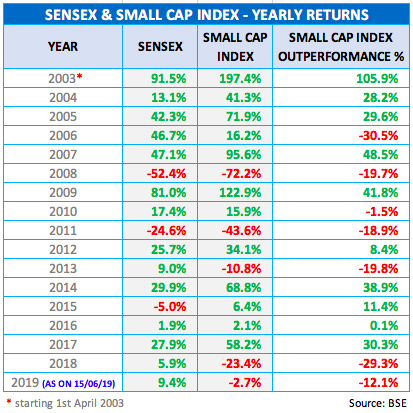10 Basic Principles Every Investor Should Know
Dear Reader,
In the stock market there is no rule without an exception, there are some principles that are tough to dispute. Here are 10 general principles to help investors get a better grasp of how to approach the market from a long-term view. Every point embodies some fundamental concept every investor should know.
1. Ride the winners not the losers
Time and time again, investors take profits by selling their appreciated investments, but they hold onto stocks that have declined in the hope of a rebound. If an investor doesn't know when it's time to let go of hopeless stocks, he or she can, in the worst-case scenario, see the stock sink to the point where it is almost worthless. Of course, the idea of holding onto high-quality investments while selling the poor ones is great in theory, but hard to put into practice. The following information might help:
Riding a Winner - The theory is that much of your overall success will be due to a small number of stocks in your portfolio that returned big. If you have a personal policy to sell after a stock has increased by a certain multiple - say three, for instance - you may never fully ride out a winner. No one in the history of investing with a "sell-after-I-have-tripled-my-money" mentality has ever had a tenbagger. Don't underestimate a stock that is performing well by sticking to some rigid personal rule - if you don't have a good understanding of the potential of your investments, your personal rules may end up being arbitrary and too limiting.
Selling a Loser - There is no guarantee that a stock will bounce back after a decline. While it's important not to underestimate good stocks, it's equally important to be realistic about investments that are performing badly. Recognizing your losers is hard because it's also an acknowledgment of your mistake. But it's important to be honest when you realize that a stock is not performing as well, as you expected it to. Don't be afraid to swallow your pride and move on before your losses become even greater.
In both cases, the point is to judge companies on their merits according to your research. In each situation, you still have to decide whether a price justifies future potential. Just remember not to let your fears limit your returns or inflate your losses.
2. Avoid chasing hot tips
Whether the tip comes from your brother, your cousin, your neighbour or even your broker, you shouldn't accept it as law. When you make an investment, it's important you know the reasons for doing so; get into the basics by doing research and analysis of any company before you even consider investing your hard-earned money. Relying on a tidbit of information from someone else is not only an attempt at taking the easy way out, it's also a type of gambling. Sure, with some luck, tips sometimes pan out but they will never make you an informed investor, which is what you need to be to be successful in the long run. Find out what you should pay attention to - and what you should ignore.
3. Don't sweat on the small stuff
As a long-term investor, you shouldn't panic when your investments experience short-term movements. When tracking the activities of your investments, you should look at the big picture. Remember to be confident in the quality of your investments rather than nervous about the inevitable volatility of the short term. Also, don't overemphasize the few bucks difference you might save from using a limit versus market order.
Active traders will use these day-to-day and even minute-to-minute fluctuations as a way to make gains. But the gains of a long-term investor come from a completely different market movement - the one that occurs over many years - so keep your focus on developing your overall investment philosophy by educating yourself.
4. Don't overemphasize the P/E ratio
Investors often place too much importance on the price-earnings ratio (P/E ratio). Because it is one key tool among many, using only this ratio to make buy or sell decisions is dangerous and ill-advised. The P/E ratio must be interpreted within a context, and it should be used in conjunction with other analytical processes. So, a low P/E ratio doesn't necessarily mean a security is undervalued, nor does a high P/E ratio necessarily mean a company is overvalued.
5. Resist the lure of penny stocks
A common misconception is that there is less to lose in buying a low-priced stock. But whether you buy a Rs. 5 stock that plunges to Rs. 0 or a Rs. 75 stock that does the same, either way you've lost 100% of your initial investment. A lousy Rs. 5 company has just as much downside risk as a lousy Rs. 75 company. In fact, a penny stock is probably riskier than a company with a higher share price, which would have more regulations placed on it.
6. Pick a strategy and stick with it
Different people use different methods to pick stocks and fulfill investing goals. There are many ways to be successful and no one strategy is inherently better than any other. However, once you find your style, stick with it. An investor who flounders between different stock-picking strategies will probably experience the worst, rather than the best, of each. Constantly switching strategies effectively makes you a market timer, and this is definitely most investors should avoid. Take Warren Buffett's actions during the dotcom boom of the late '90s as an example. Buffett's value-oriented strategy had worked for him for decades, and - despite criticism from the media - it prevented him from getting sucked into tech startups that had no earnings and eventually crashed.
7. Focus on the future
The tough part about investing is that we are trying to make informed decisions based on things that have yet to happen. It's important to keep in mind that even though we use past data as an indication of things to come, it's what happens in the future that matters most.
A quote from Peter Lynch's book "One Up on Wall Street" (1990) about his experience with one of the stock he bought demonstrates this: "If I'd bothered to ask myself, 'How can this stock go any higher?' I would have never bought it as stock price already went up twenty fold. But I checked the fundamentals, realized that company was still cheap, bought the stock, and made seven fold after that." The point is to base a decision on future potential rather than on what has already happened in the past.
8. Adopt a long-term perspective.
Large short-term profits can often entice those who are new to the market. But adopting a long-term horizon and dismissing the "get in, get out and make a killing" mentality is a must for any investor. This doesn't mean that it's impossible to make money by actively trading in the short term. But, as we already mentioned, investing and trading are very different ways of making gains from the market. Trading involves very different risks that buy-and-hold investors don't experience. As such, active trading requires certain specialized skills.
Neither investing style is necessarily better than the other - both have their pros and cons. But active trading can be wrong for someone without the appropriate time, financial resources, education and desire.
9. Be open-minded
Many great companies are household names, but many good investments are not household names. Thousands of smaller companies have the potential to turn into the large blue chips of tomorrow. In fact, historically, small-caps have had greater returns than large-caps; over the decades.
This is not to suggest that you should devote your entire portfolio to small-cap stocks. Rather, understand that there are many great companies beyond those in the Small Cap Index, and that by neglecting all these lesser-known companies, you could also be neglecting some of the biggest gains. We have already experienced the multibagger returns from lesser known companies recommended under Hidden Gems service in past, our stock picks like Camlin Fine Sciences, TCPL Packaging, Kovai Medical, Wim Plast, Acrysil, Mayur Uniquoters, Balaji Amines, Rane Brake Linings etc have delivered returns in the range of 500% to 1800% over period of 2 to 5 years.
10. Don't miss to diversify your equity portfolio
Its always wise to have stocks from different sectors and Industries. Do not expose your self to many stocks from the same sector. Be it IT, Consumers, Finance, Infrastructure, Pharmaceutical or any other sector, you must have a proper mix of all with suitable allocation based on future outlook of that sector and industry. Most of the companies from capital goods and Infrastructure sector have not performed since last 6 to 7 years but private banking stocks, NBFCs, consumers and automobile companies stocks are making new all time highs. Hence, its important to stay diversified with your stock investments.
Wish you happy & safe Investing!
Regards,
Team - Saral Gyan.

 Home
Home Saral Gyan Freebies
Saral Gyan Freebies Saral Gyan Services
Saral Gyan Services About Us
About Us Contact Us
Contact Us

























